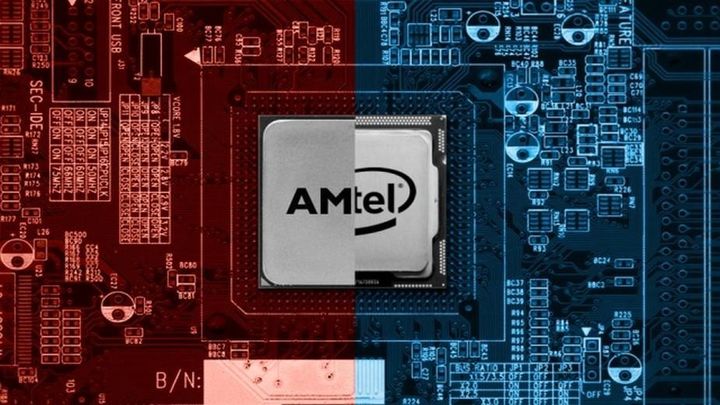Intel Aware of the Power of New Ryzens
An internal memo from Intel leaked to the Internet, concernning how the company perceives the competition from AMD and what actions it plans to take in the nearest future. It caused a lot of commotion on the Internet and an avalanche of negative comments from Intel's employees.

A few days ago, an internal Intel note titled "AMD competitive profile: Where we go toe-to-toe, why they are resurgent, which chips of ours beat theirs" leaked to the web . It gives a very interesting view of the situation and shows how Intel perceives its biggest rival and what challenges the company sees.
Although the market is still largely Intel's, and AMD processors are found in less than 20% of PC, the company clearly does not underestimate the threat.
Technological, price and marketing differences
There are currently two companies on the market that use the 7-nanometer manufacturing process. Intel is not among them. These are Samsung and TSMC, which is a new partner manufacturing integrated circuits for AMD. Processors made in such a lithographic process have better performance and are more power-efficient. In addition, using the services of external manufacturers allows for reduction of costs. Meanwhile, Intel is only now entering the world of 10-nanometres lithographic process and plans to move to the 7-nm process in two years' time.
Intel recognizes that AMD is starting to win further bids to deliver its chipsets to business customers, and competition is particularly fierce where very high performance is needed. However, there is still a certain advantage of their processors in games and tasks using fewer cores and in the market for mobile solutions. Intel also sees its chance in the graphics market, where it intends to compete with AMD and Nvidia.
The note also highlights the importance of the benchmarks used for testing. It pays particular attention to the one used by AMD during Cinebench shows, which, as it puts more emphasis on multi-core performance, will always favor AMD systems. Hence, Intel's plans to focus more media attention on making processors less disconnected from reality.
What is Intel going to do from now on?
The company will focus on the "six pillars of innovation" that are to be key to retaining the advantage. These are process, architecture, memory, connections, security, and software. Intel also believes that just being a larger company with a broader product portfolio and 15,000 software developers is something that lets you think about the future with confidence. Employees who refer to the matter on the company's internal forum are not so optimistic.
The "secret sauce" section of this article makes me cringe. There isn't one piece of evidence that makes me hopeful for Intel in the short term when it comes to competing vs. AMD - no numerics at all, except for how big our former SSG is. Having more SW engineers than AMD? Not convincing.
Some employees even go one step further.
Intel is an ongoing meme among Reddit users. Regardless how you feel about an online forum, those are our product users. Many of them aren't willing to pay our premium with the current state of the market especially with Zen 2 coming. Will be interesting to see if that effects pricing in the near future.
- Latest Resident Evil 9 leak reveals the game's most closely guarded secret
- The Elder Scrolls 6 finally gets a release year? Fans believe Skyrim's latest trailer has a valuable clue
- Baldur's Gate 3 publisher explains confusion with Divinity: Original Sin 3. We know what Larian is definitely not working on
0
Latest News
- Is Roblox shutting down on January 1? The rumor is back again, but let’s take a look at whether there’s any truth to it this time
- Studio responsible for GTA 6 is in serious trouble. British government announces investigation against Rockstar after controversial layoffs
- Interest in Clair Obscur: Expedition 33 has exploded once again thanks to The Game Awards 2025. There's at least two pieces of evidence to prove it
- After nearly 30 years, Ghost of Yotei's devs must start a new chapter. Brian Fleming's days at Sucker Punch are numbered
- Baldur's Gate 3 sales aren't slowing down even for a moment. Swen Vincke gave a new, round figure

